In the fall of 2016, Meissen Porcelain Manufactory welcomed its first Asian designer. This is a significant event, as it was Augustus the Strong who established the first European porcelain manufactory owing to his love for Asian porcelain. After three hundred years, we witness the encounter of the West and the East again. The talented Chinese female designer, HOU Zhuoyu, combines her extraordinary skills, insight, and sensitivity with the rich tradition of Meissen porcelain to create a new series of masterpieces. The latest release of Fortune Dragon (Glücksdrache) provides us with an excellent opportunity to interview HOU Zhuoyu and learn more about her story and her work.
Interviewee:Zhuoyu Hou
Interviewer: Dingwei Yin
Editor:Socang Art; Wei Song
We solemnly declare that the copyright of all the pictures used in this article belongs to Ms. Hou Zhuoyu and Meisen Ceramics Factory. And this article may not be reproduced without the permission of Socang Art and the interviewer.
Designing in the Garden of Eden of European Porcelain——Zhuoyu Hou
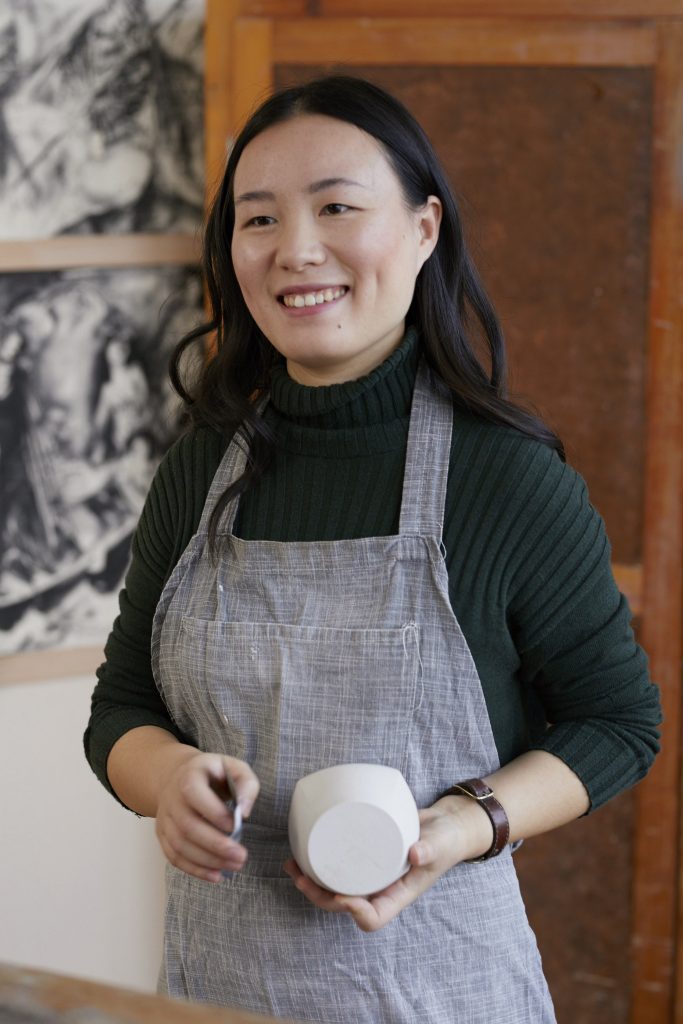
PART.01
Yin: It is many designers’ and artists’ dream to join this luxurious industry. From China to global leading brands, the experience is extraordinary. Please share your experience and explain why you wanted to be a professional designer.
Hou: When I was thirteen, I graduated from junior high school. One of my father’s close friends was a teacher who taught art at school. This gave me the opportunity to learn how to draw and paint classical Chinese art. During my time in high school, I decided that I wanted to become a professional artist or designer in the future. When I enrolled in the Fine Arts Academy, I chose to specialize in product design. This decision was influenced by my experiences in childhood. I grew up in a small village surrounded by bamboo. When people needed furniture, they would ask carpenters to make it for them. These carpenters would stay at my home for several days to finish their work, using materials such as wood and bamboo. I was fascinated by the whole process of producing handmade products. This sparked a deep interest in me: the pursuit of handmade objects. I believe that a handmade object is created by people and serves people. Some of them can even be used and passed down for generations. The product embodies our emotions and enriches our daily life. It not only has a practical value but also provides emotional sustenance.

Yin: How did you enter the porcelain industry and Meissen manufactory?
Hou: I learned industrial design at the Shanghai Design Institute of the China Fine Arts Academy during my undergraduate studies in Shanghai. The curriculum was diverse and included various subjects such as product design, graphic design, architectural renovation, web design, photography, and so on. During my internship, I worked as a UI designer at an internet company which provided me with valuable experience in graphic design and led me to reconsider my career path.
The rapid growth of technology brought a revolution to the design industry, making it challenging to keep up with the continuous updates and changes in interfaces. Well-designed drafts are soon replaced by new versions, leaving behind no trace. This made me realize the importance of "useful design" and "the relationship between design and humans." I remember watching bamboo craftsmen making furniture and how handmade products retain human warmth and can be passed down from generation to generation, leaving behind traces of use. An old object can record the history and memory of a family.
Therefore, I raised my passion for improving myself in product design. My interest in this field started with Bauhaus, which emphasizes materials, functionality, and precise and meticulous style. I was drawn to these aspects and decided to pursue my education in Germany. From 2014 to 2016, I studied at the Burg Giebichenstein University of Art and Design Halle as a postgraduate student in Product Design and Applied Art, with a major in Porcelain and Glassware Design. I am grateful to Professor Hubert Kittel, who was my supervisor, for his guidance and support throughout my studies. To prepare for my graduate show, I designed a porcelain work with a bamboo weaving relief inspired by the Chinese tureen tea set, which showcased both traditional techniques and modern aesthetics. However, due to the limitations of my studio, my idea could not be fulfilled. Professor Kittel recommended that I contact Jörg Danielczyk, the head of the sculpture department at Meissen. He allowed me to finish my work at Meissen. My graduation design received positive feedback and was invited to participate in exhibitions in Germany and the Netherlands. Dr. Tillmann Blaschke, the director of the Meissen Porcelain Manufactory, visited our graduate show at our academy and was impressed with my design, which ultimately led to my hiring as a designer at Meissen.
PART.02
Yin: What is your daily work?
Hou: My job involves three main directions—design of form, pattern, and limited artwork. When I have an idea, I usually sketch multiple drawings. Depending on the type of forms, I use either computer software or handmade drawings to finish them. For non-symmetrical and non-traditional work, I use clay to shape the form so I can better understand the curves and flows of each surface. If it's a cylindrical shape, I opt for plaster molds. This working mode helps me bridge the gap between computer and manual work. In my studio, there’s a computer on one side and my hand-made countertop art on the other. The limited work includes the essence of Meissen techniques for over 300 years, and they are valuable and collectible artworks. Developing and producing such products, I work closely with various departments in the factory. The storytelling aspect of my work is vital to me. For instance, in 2017, I designed a vase with an image of carp leaping over a dragon gate, and in 2022, I created a vase with a Fortune Dragon.
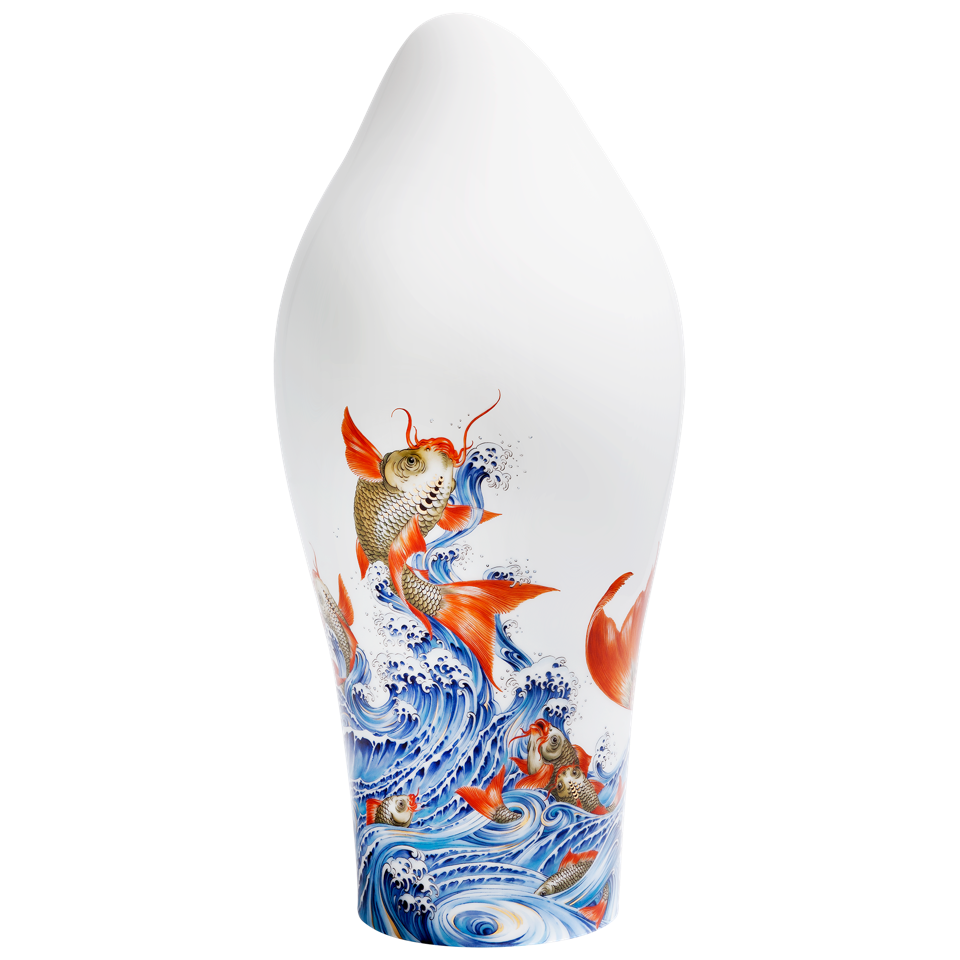
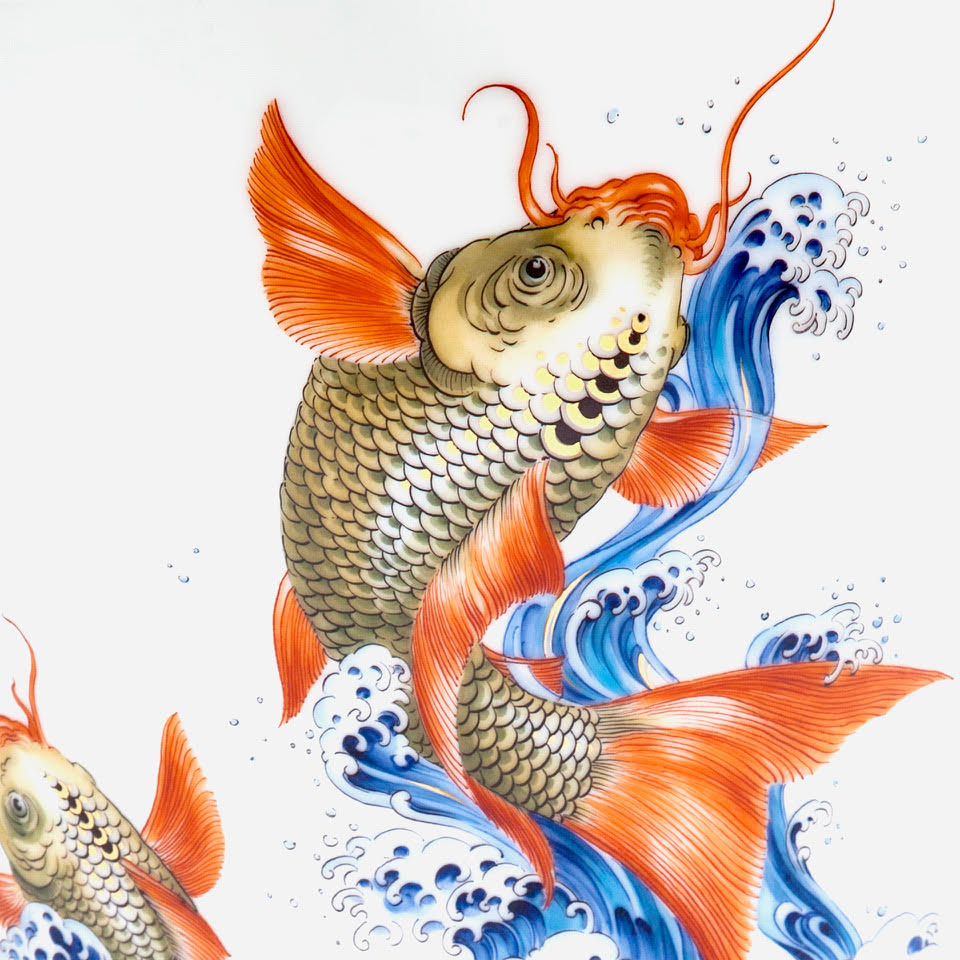
Yin: Meissen has produced many masterpieces over the years. Many of them have become icons. As a designer, how do you strike a balance between your personal creativity and the classical style of Meissen? Is there a lot of pressure when dealing with such a strong tradition?
Hou: Over the course of its 300-year history, Meissen has had many skilled designers and painters. In this case, the company requires new designers who can meet the high standards to maintain Meissen’s uniqueness while also bringing something new to the table. Customers expect designers to create products that not only match but surpass previous designs. This presents a big challenge. However, as my recent artworks have received positive feedback from peers and clients, I have been given more opportunities to experiment with new aesthetic systems and design styles.
PART.03
Yin: Can you share with us your recent design projects and creative concepts?
Hou: Many of my inspirations come from life and nature.
The Fish Mouth Vase, Ying and Yang Vase, and Antarctica, which were launched in 2017 and 2018, were the first group of artworks I designed after I joined the company. All these objects were made firstly through clay, then cast plaster molds, polished several times, and finally grouted with porcelain clay. The Penguin series was inspired by the image of penguins, and I extracted their bodies in geometric forms. Penguins often appear in groups and families. Combining this feature, I expanded a penguin vase into a penguin vase family. The final product can be used as a vase or kettle. My 4-year-old son loves using the smallest baby penguin vase as a milk jug. The hand can just hold the back of the penguin vase. In addition, the water glasses, bowls, and candle holders in this series were developed based on the ice-filled Antarctic where penguins live. When these different vessels are combined, the underlying metaphor that I want to convey is a happy family.
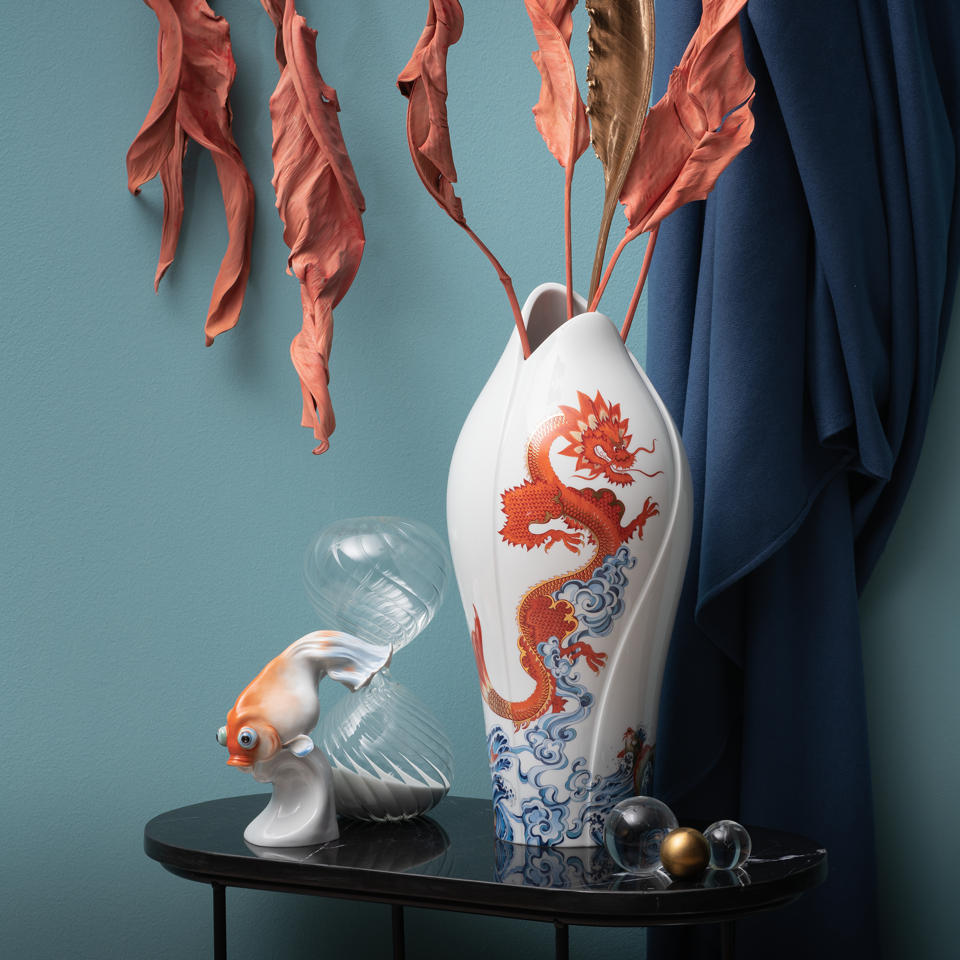
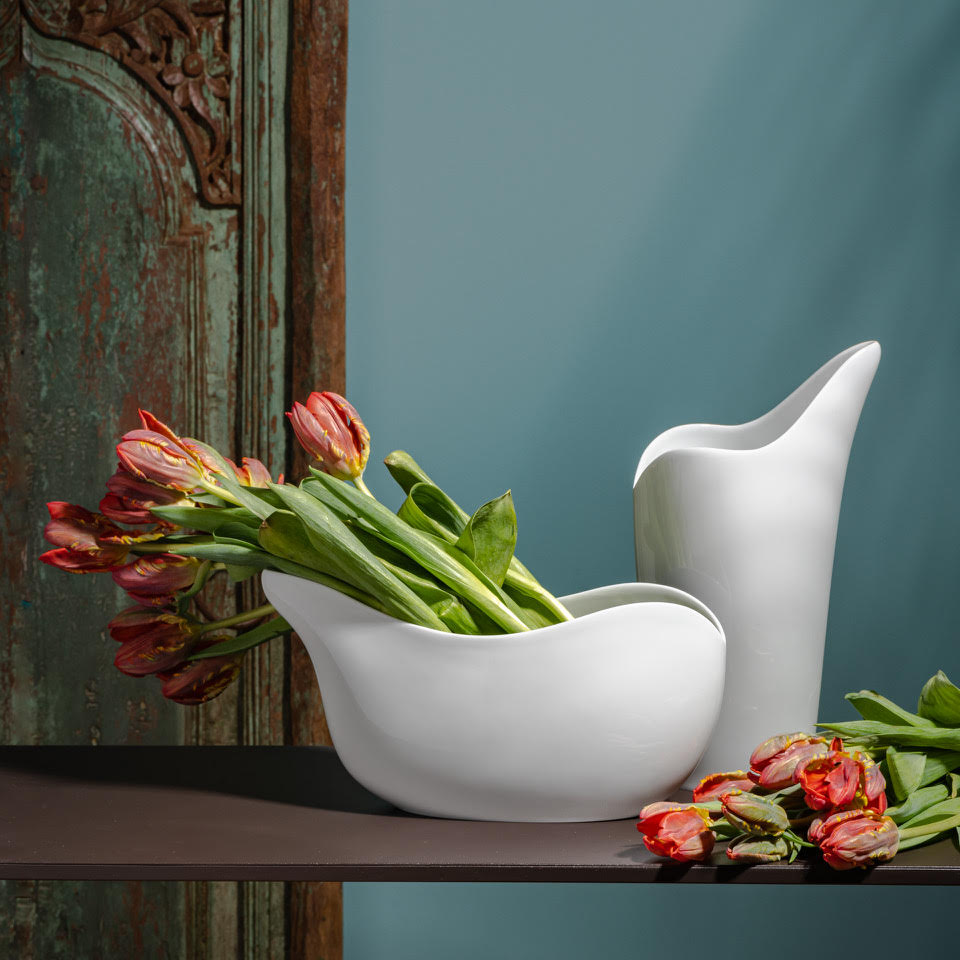
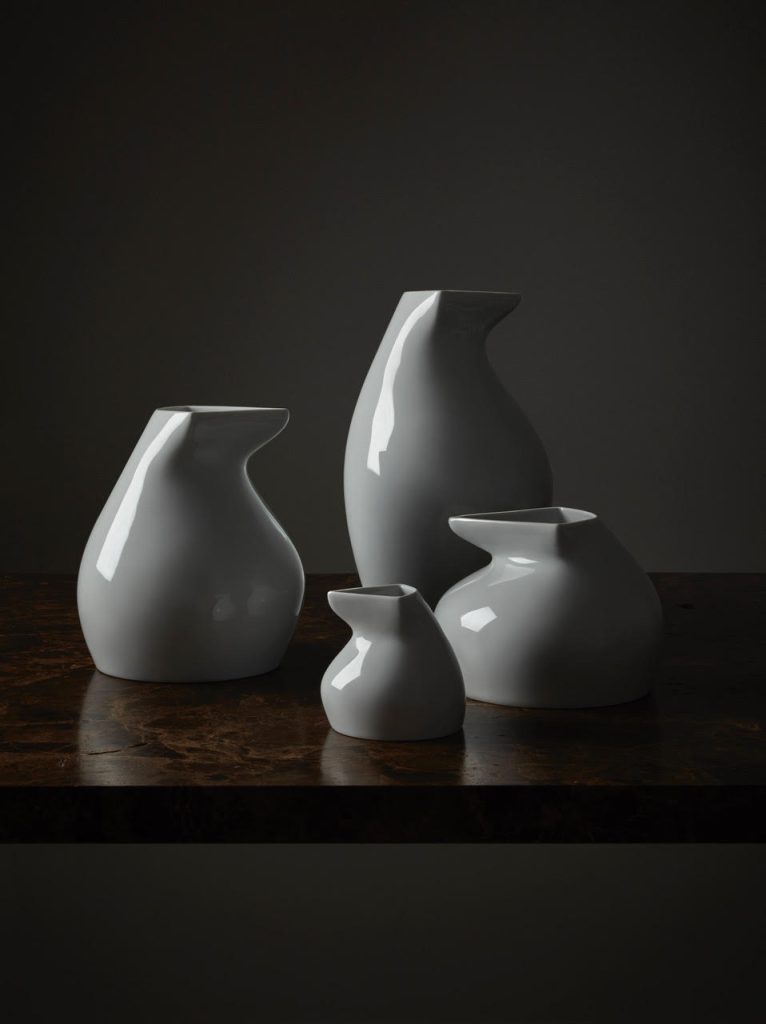
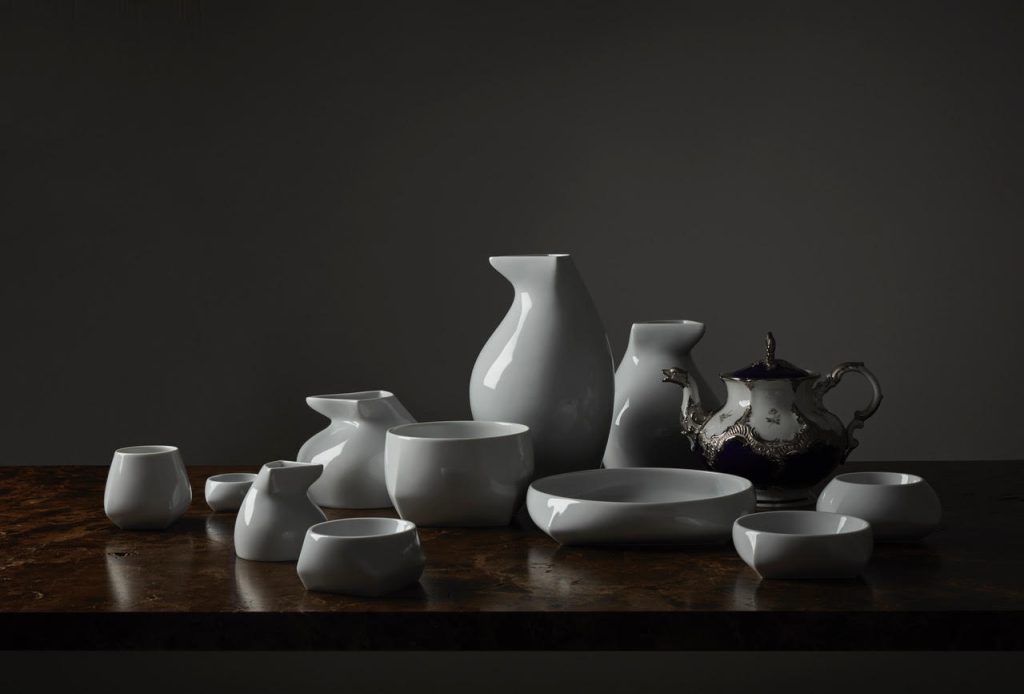
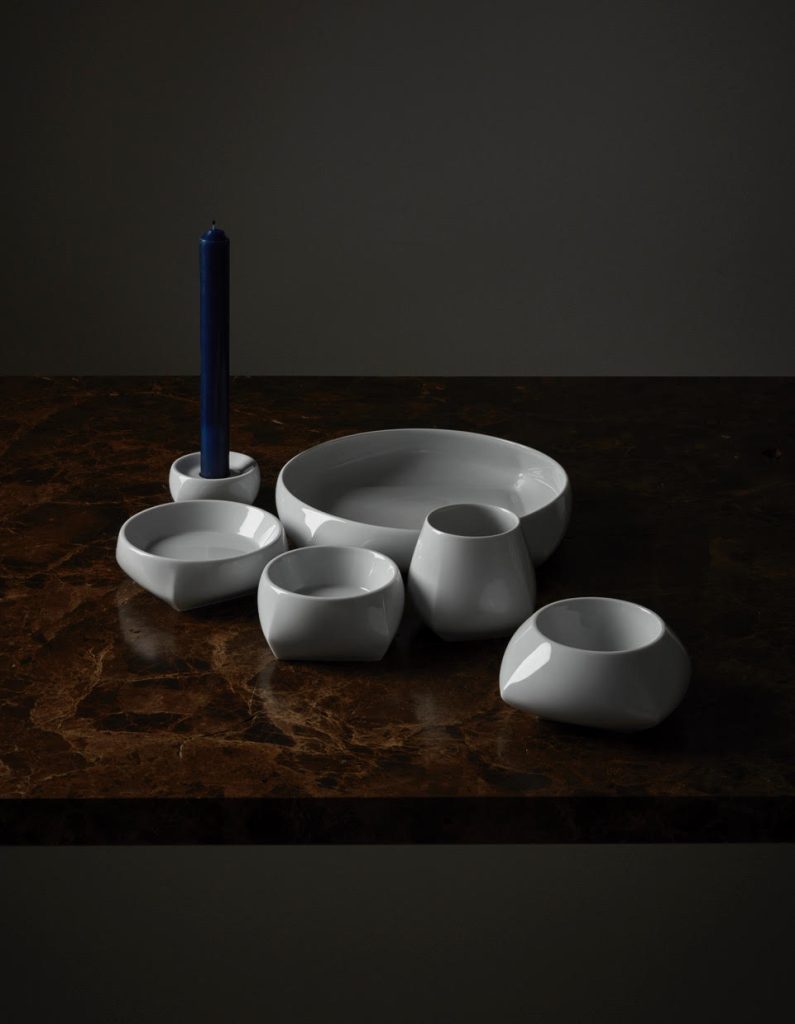
Since 2019, I have been focusing on refining the beautiful moments of nature and incorporating them into my designs. One such example is the Twistdose, which resembles the blooming of a flower and the formation of a water vortex. Using a combination of curves and changing surfaces, we aim to recreate the moment when flowers come into full bloom. The rhythm created by this design is similar to that of a moving surface within a vortex. In 2020, I continued to expand on the Waves Relief Series (Wellenspiel) and also launched the Waves Relief Asian Series (Wellenspiel Asien). This series was originally created by Sabina Wachs in 1994 and has been one of the most popular products for nearly thirty years. With the growing popularity of Asian catering culture in Europe, there has been a rising demand for tableware with an Asian style. In response to this demand, the company requested that I expand the Waves Relief Series to include items such as rice bowls, soup bowls, noodle bowls, side dish plates, and soy sauce and vinegar seasoning pots that are suited to Asian dining habits.
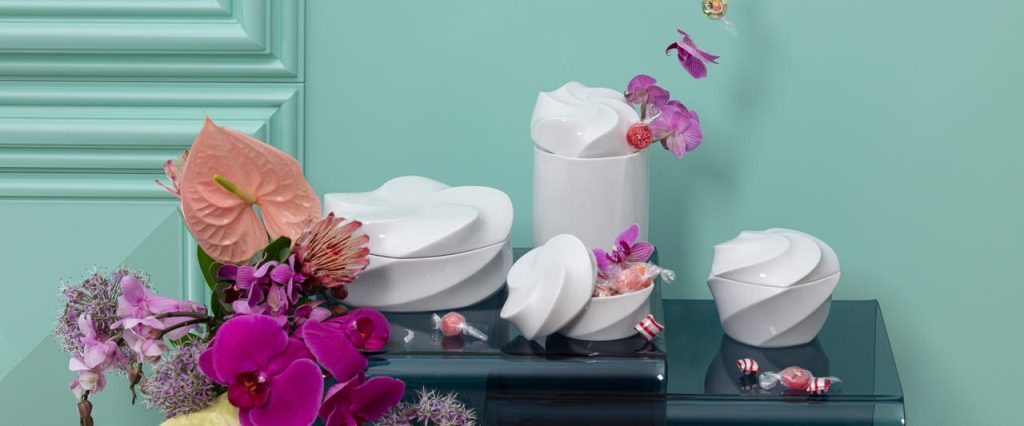
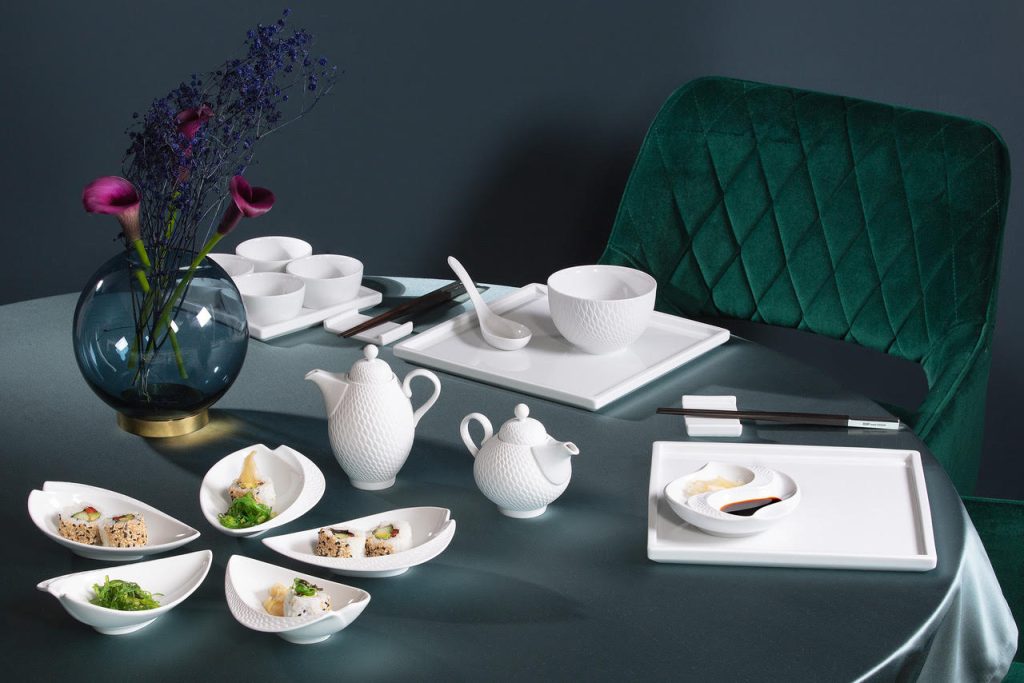
Yin: I noticed that you created a new dragon pattern last year called Fortune Dragon. This is the third time that the Meissen product line has introduced a new dragon pattern, following Court Dragon and Ming Dragon. Can you tell us more about the inspiration and creative background behind the Fortune Dragon pattern?
Hou: The Meissen Court Dragon and Ming Dragon are classic patterns of Meissen. The Court Dragon is borrowed from the Japanese Kakiemon style, and the Ming Dragon is inspired by the Chinese style. Both patterns reflect Europeans’ understanding of East Asian art styles at that time. For instance, in the Ming Dragon series, male and female dragons are differentiated by their scales. Male dragons have reverse scales, while female dragons do not.
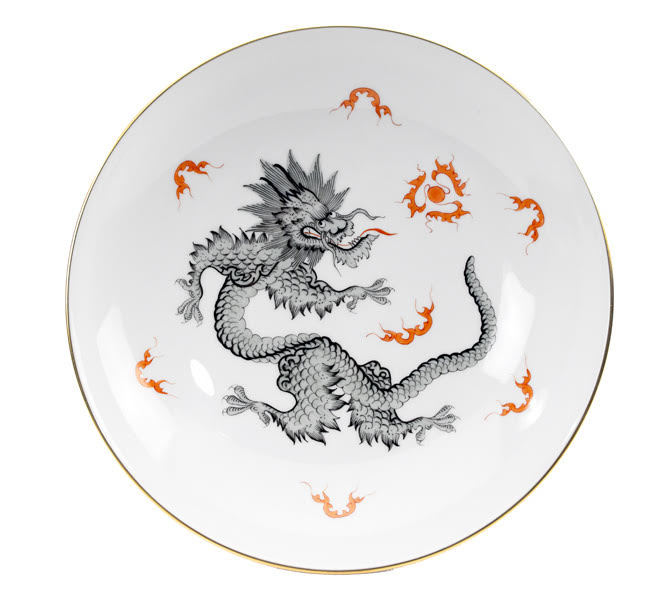
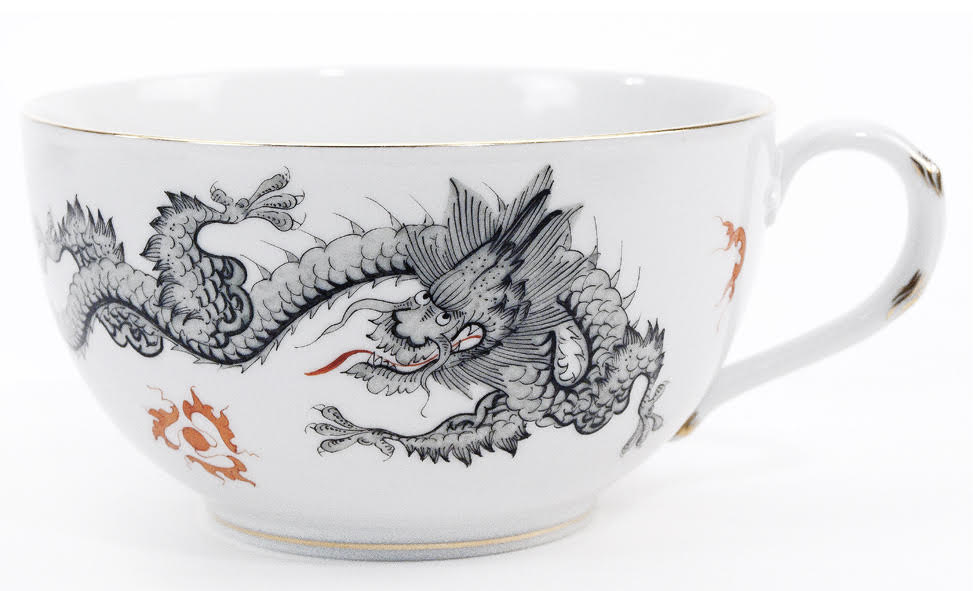

Our director wanted me to design a new dragon pattern, and I created this year’s limited edition product, the Flying Dragon in Clouds (Drachen fliegend im Wolken), drawing inspiration from ancient Chinese paintings, especially Nine Dragons by the Southern Song Dynasty painter Chen Rong. The dragon is a sacred creature in the East, and through the combination of dragon and auspicious clouds, a certain mysticism is presented. I adapted the dragon based on the concept that dragons have nine similarities and referred to the traditional Chinese concept of the round sky and the square earth for the shape of the entire vase. The mouth of the vase is round and the base is square. The ground color of the vase is black, and the auspicious clouds are cobalt blue. The dragon is painted in gold using the special Limoges technique. After the vase was released, this artwork sold out immediately and was praised by our director as an epoch-making new design. I plan to gradually extend this pattern to the design of daily-use porcelain.
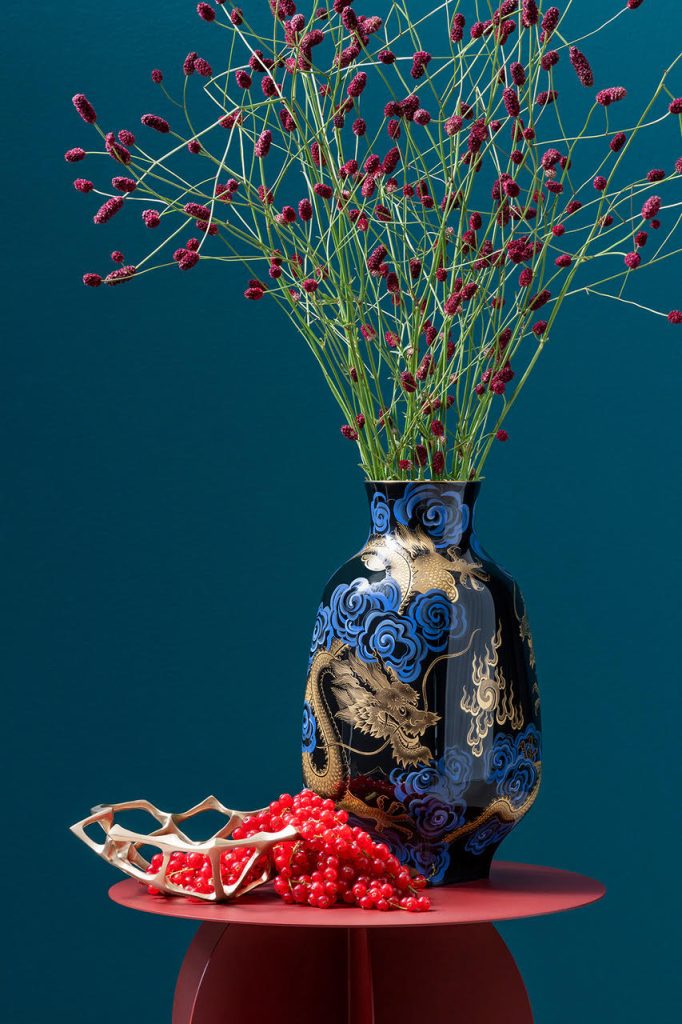
PART.04
Yin: Learning to paint a new pattern requires not only time but also a thorough understanding of the content and background. How do you collaborate with a team of painters and finalize a new project? And how do you turn the draft into a finished product?
Hou: When coming up with a new porcelain pattern, painters must consider more than just the pattern’s beauty. They also need to think about layout, composition, and color. It is important to understand how mineral pigments appear at different firing temperatures and painting techniques. Usually, I will give the painter my preferred color scheme and pattern layout, and we will make adjustments as we proceed. The painter will do their best to make my design come true, but they may have to make changes due to technical limitations or other factors.
For example, in the design of the Fortune Dragon Vase, I wanted a black background with a golden dragon and blue clouds. However, it’s hard to show blue on black. We had to decide whether to use underglaze cobalt blue or overglaze blue. After discussing with the production department, we decided to stack white directly on black (Limoges technique). We had to add cobalt blue pigment to the white to make our plan come true. After many firings and experiments at different temperatures, we finally achieved our expectations.
Sometimes, due to cultural differences, I need to explain my design concepts and background to the artist in detail. The entire implementation is a mutual learning experience for everyone who is involved. I enjoyed working with the team of Meissen painters.
